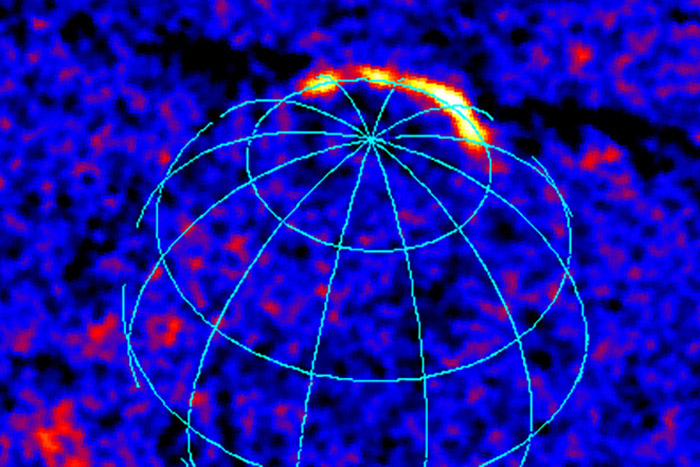Earth's Aurora Erupts With Powerful X-Ray Display

Although its job is to search for powerful energies emanated by distant cosmic objects, ESA's INTEGRAL space observatory recently turned its eye toward Earth and saw our home planet's aurora glowing brightly with powerful X-rays.
PHOTOS: Epic Auroras Throughout the Solar System
The animation below is made from data acquired by INTEGRAL's IBIS/ISGRI instrument on Nov. 10, 2015. Although Earth isn't itself visible its position and northern rotational pole is noted by the light blue lines as the data were captured across 8-minute intervals. The X-ray emissions from auroras dancing above Russia, Canada, and Greenland are visible as bright red, yellow, and white flashes.
Coincidentally these same auroral displays were also captured from low-Earth orbit by NASA astronaut Scott Kelly. The photo below was shared on Twitter by Kelly to mark one of the 15 sunrises ISS astronauts experience every day, as well as the completion of day 228 of his year-long mission aboard Station.
Auroras are the result of charged particles streaming out from the sun getting caught up in Earth's magnetic field and "funneled" back down toward the poles, from where the magnetic field lines originate. When these particles collide with atoms in the atmosphere radiation is emitted across a wide range of the electromagnetic spectrum, including visible light.
ANALYSIS: Getting Intimate with a Black Hole Behemoth
Launched Oct. 17, 2002, ESA's International Gamma-Ray Astrophysics Laboratory (INTEGRAL) is a 4-ton, 16-foot (5-meter) -tall spacecraft designed to observe the universe in high-energy wavelengths, specifically gamma rays from supermassive black holes but also in X-ray and select optical wavelengths. It orbits Earth at distances ranging from 6,200 miles (10,000 km) to 87,000 (140,000 km), outside the most harmful and interfering energy of the radiation belts.
Breaking space news, the latest updates on rocket launches, skywatching events and more!
On rare occasions INTEGRAL is aimed toward Earth to block out the background field and allow scientists to calibrate the instruments. It just so happened that this time Earth put on an X-ray performance of its own.
ANALYSIS: Black Hole Wakes Up, Torments and Eats a Planet
"Auroras are transient, and cannot be predicted on the timeframe that satellite observations are planned, so it was certainly an unexpected observation," said INTEGRAL Project Scientist Erik Kuulkers. "Although the original background X-ray measurements didn't go quite to plan this time, it was exciting to capture such intense auroral activity by chance."
INTEGRAL is the result of an international collaboration between ESA and the U.S., Russia, the Czech Republic, and Poland, and includes instruments from research teams in Italy, France, Germany, Denmark, and Spain. Learn more about the INTEGRAL mission here.
Source: ESA
Originally published on Discovery News.

Jason Major is a big fan of all things to do with astronomy and space exploration. He has a particular love of astrophotography, and he's very good at it too! You can find all of Jason's stellar photographs of the solar system on his website, Lights in the Dark, where he posts space news and images regularly.

